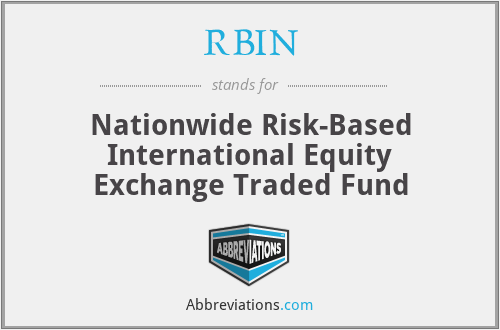We've got 3,436 shorthands for gas exchange »
Acronyms that contain the term gas exchange
What does gas exchange mean? This page is about the various possible meanings of the acronym, abbreviation, shorthand or slang term: gas exchange.
Filter by:
Sort by:PopularityAlphabeticallyCategory
| Term | Definition | Rating |
|---|---|---|
| RBIN | Nationwide Risk-Based International Equity Exchange Traded Fund | |
| SEC | Securities and Exchange Commission | |
| SEC | Securities and Exchange Commission | |
| NYSE | New York Stock Exchange | |
| SEC | Securities and Exchange Commission | |
| FOREX | Foreign Exchange | |
| NYSE | New York Stock Exchange | |
| NYSE | New York Stock Exchange | |
| SEC | Securities and Exchange Commission | |
| FX | Foreign Exchange | |
| EXC | Exchange | |
| FX | Foreign Exchange | |
| FX | Foreign Exchange | |
| AMEX | American Stock Exchange | |
| TSX | Toronto Stock eXchange | |
| IE | Information Exchange | |
| IDX | Internet Data eXchange | |
| LSE | London Stock Exchange | |
| ASX | Australian Stock Exchange | |
| ETF | Exchange Traded Funds | |
| LME | London Metal Exchange | |
| PBX | Private Branch Exchange | |
| PBX | Private Branch Exchange | |
| PBX | Private Branch Exchange | |
| PBX | Private Branch Exchange |
What does gas exchange mean?
- Gas exchange
- Gas exchange is the physical process by which gases move passively by diffusion across a surface. For example, this surface might be the air/water interface of a water body, the surface of a gas bubble in a liquid, a gas-permeable membrane, or a biological membrane that forms the boundary between an organism and its extracellular environment. Gases are constantly consumed and produced by cellular and metabolic reactions in most living things, so an efficient system for gas exchange between, ultimately, the interior of the cell(s) and the external environment is required. Small, particularly unicellular organisms, such as bacteria and protozoa, have a high surface-area to volume ratio. In these creatures the gas exchange membrane is typically the cell membrane. Some small multicellular organisms, such as flatworms, are also able to perform sufficient gas exchange across the skin or cuticle that surrounds their bodies. However, in most larger organisms, which have small surface-area to volume ratios, specialised structures with convoluted surfaces such as gills, pulmonary alveoli and spongy mesophylls provide the large area needed for effective gas exchange. These convoluted surfaces may sometimes be internalised into the body of the organism. This is the case with the alveoli, which form the inner surface of the mammalian lung, the spongy mesophyll, which is found inside the leaves of some kinds of plant, or the gills of those molluscs that have them, which are found in the mantle cavity. In aerobic organisms, gas exchange is particularly important for respiration, which involves the uptake of oxygen (O2) and release of carbon dioxide (CO2). Conversely, in oxygenic photosynthetic organisms such as most land plants, uptake of carbon dioxide and release of both oxygen and water vapour are the main gas-exchange processes occurring during the day. Other gas-exchange processes are important in less familiar organisms: e.g. carbon dioxide, methane and hydrogen are exchanged across the cell membrane of methanogenic archaea. In nitrogen fixation by diazotrophic bacteria, and denitrification by heterotrophic bacteria (such as Paracoccus denitrificans and various pseudomonads), nitrogen gas is exchanged with the environment, being taken up by the former and released into it by the latter, while giant tube worms rely on bacteria to oxidize hydrogen sulfide extracted from their deep sea environment, using dissolved oxygen in the water as an electron acceptor. Diffusion only takes place with a concentration gradient. Gases will flow from a high concentration to a low concentration. A high oxygen concentration in the alveoli and low oxygen concentration in the capillaries causes oxygen to move into the capillaries. A high carbon dioxide concentration in the capillaries and low carbon dioxide concentration in the alveoli causes carbon dioxide to move into the alveoli.
Know what is gas exchange? Got another good explanation for gas exchange? Don't keep it to yourself!
Still can't find the acronym definition you were looking for? Use our Power Search technology to look for more unique definitions from across the web!
Citation
Use the citation options below to add these abbreviations to your bibliography.
Style:MLAChicagoAPA
"gas exchange." Abbreviations.com. STANDS4 LLC, 2024. Web. 22 May 2024. <https://www.abbreviations.com/gas%20exchange>.


Discuss these gas exchange abbreviations with the community:
Report Comment
We're doing our best to make sure our content is useful, accurate and safe.
If by any chance you spot an inappropriate comment while navigating through our website please use this form to let us know, and we'll take care of it shortly.
Attachment
You need to be logged in to favorite.
Log In